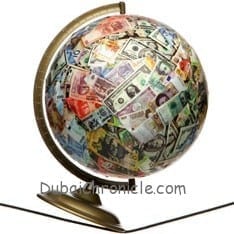
The U.S. Federal Reserve announced plans to cut its monthly bond purchases to $75 billion from $85 billion. This is the first step toward unwinding the unprecedented stimulus that former Chairman Ben S. Bernanke put in place to help the economy recover from the worst recession since the 1930s.
“In light of the cumulative progress toward maximum employment and the improvement in the outlook for labor market conditions, the committee decided to modestly reduce the pace of its asset purchases,” the Federal Open Market Committee said today at the conclusion of a two-day meeting in Washington. The Fed’s purchases will be divided between $40 billion in Treasuries and $35 billion in mortgage bonds starting in January.
The purchases swelled the U.S. Federal Reserve’s balance sheet almost to $4 trillion as he sought to put millions of jobless Americans back to work. The policy stirred concern it risks inflating asset-price bubbles even as its economic benefits ebbed.
Interest rate in the U.S. remains near zero at present, as the outlook for inflation is no higher than 2.5 percent.
Policy makers met amid signs the economy and labor market were gaining strength, even as inflation remained subdued.
The jobless rate in the U.S. fell to 7 percent in November, a five-year low, as employers added a greater-than-forecast 203,000 workers to payrolls. Unemployment was down from 10 percent in October 2009, during the recession, and up from 4.4 percent in May 2007.
Retail sales climbed by the most in five months in November, a sign that consumer spending was strengthening as the holiday season began. Industrial production last month increased by the most in a year, a Fed report showed this week.
Stocks have surged on stronger corporate earnings and continued Fed stimulus. The Standard & Poor’s 500 Index closed at a record 1,808.37 on Dec. 9 and was up 25 percent for the year as of yesterday.
The low interest rates have prompted consumers to buy homes or refinance existing mortgages, sparking a recovery in the housing market that was at the center of the financial crisis.
Growth so far has lagged behind previous recoveries. In the 17 quarters since the recession ended, the economy has expanded at an average annualized rate of 2.3 percent each quarter. That compares with an average of 3.2 percent over the same period following the 2001 and 1991 recessions, and 5 percent following the 1982 recession.



































